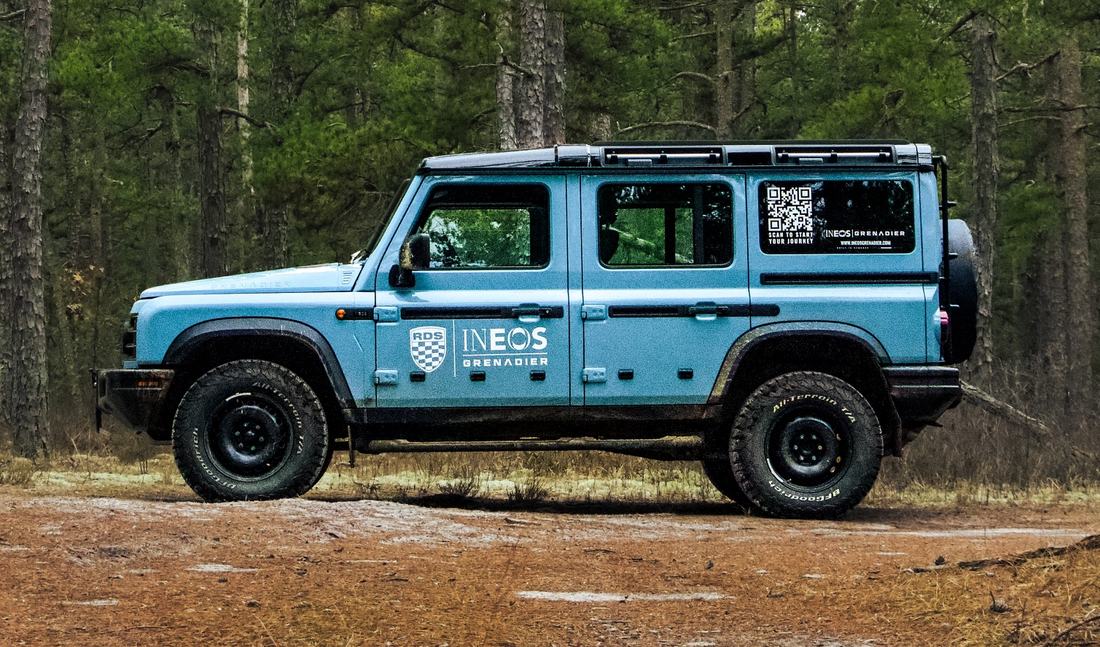|
The iconic off-road utility vehicle set to redefine the vintage automotive re-creation landscape. The 2024 Pittsburgh Vintage Grand Prix (#PVGP) is gearing up for a momentous occasion as it prepares to welcome the debut of the highly anticipated INEOS Grenadier. Designed and produced by Ineos Automotive Ltd. and manufactured in Hambach, France, the INEOS Grenadier promises to revolutionize the off-road driving experience with its rugged durability and homage to automotive heritage. Scheduled for an official unveiling on Saturday morning, August 3, at Schenley Park near the French Quarter Showfield, the addition of the INEOS Grenadier to the prestigious lineup of vehicles showcased at the Pittsburgh Vintage Grand Prix marks a significant milestone in automotive innovation. The INEOS Grenadier, which went into production in October 2022, aims to be a modern replacement for the original Land Rover Defender, featuring boxy bodywork, a steel ladder chassis, and beam axles with front and rear long-travel progressive-rate coil spring suspension. Powered by BMW six-cylinder internal combustion engines, the Grenadier embodies the spirit of its predecessor while incorporating significant improvements. Jim Ratcliffe, Chairman of INEOS, expressed his admiration for the Land Rover Defender and highlighted the INEOS Grenadier's advancements, stating, "Our new 4X4 has been inspired by the spirit of the Land Rover Defender, but it represents a major improvement on previous models." With a global target market encompassing agriculture and forestry workers, explorers, adventurers, and traditional 4X4 enthusiasts seeking an authentic off-road driving experience, the INEOS Grenadier is poised to make a lasting impact in the automotive industry. The 2024 Pittsburgh Vintage Grand Prix, renowned as the largest motorsports festival in North America, celebrates automotive heritage and racing excellence. As the perfect platform for the official debut of the INEOS Grenadier, attendees can anticipate an exclusive first look at this groundbreaking vehicle during the opening festivities on Saturday morning, August 3.
RDS Automotive Group, delighted to welcome the INEOS Grenadier to its esteemed group of automotive brands showcased at the PVGP, adds another dimension to the event's portfolio. Show sponsors such as Ferrari Philadelphia and McLaren Philadelphia contribute to the diverse array of brands on display. For more information about the INEOS Grenadier and itsdebut at the 2024 Pittsburgh Vintage Grand Prix, please visit www.pvgp.org. About Pittsburgh Vintage Grand Prix The Pittsburgh Vintage Grand Prix Association is a 501(c)(3) non-profit organization dedicated to hosting a world-class vintage automotive festival for charity. Spanning 10 days with two race weekends, car shows, parties, motorbikes, and galas, the PVGP is the nation's largest motorsport festival. Highlighted by "The Vintage," the longest-running vintage race on city streets in North America, surrounded by 17 individual car shows segmented by country and marque, the PVGP's 2024 Race Week runs from July 25th through August 4th. Culminating with the 42nd annual vintage races and car shows at Schenley Park on the weekend of August 3/4, the Pittsburgh Vintage Grand Prix Association has raised over $6 million for Autism-Pittsburgh and Merakey Allegheny Valley School since its founding in 1983, contributing to autistic and intellectual and developmental disabilities charities.
0 Comments
|
Stories
Some of the stories, pictures and articles that we have been included in over the years. Archive
June 2024
Categories
All
|




 RSS Feed
RSS Feed